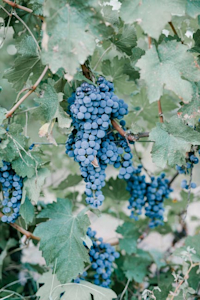It's a beautiful summer day, and you're sitting outside sipping chardonnay from your favorite producer. It's no wonder that the Greeks called wine the "nectar of the gods."
Did you know that in addition to enjoying wine, you can invest in wine as well?
Wine investments are often overlooked but can be an excellent addition to your investment strategy. This wine investment guide will help you get started.
Research Wine Investments
Like all kinds of investing, the first step is to conduct research. Making a good wine investment is not as simple as picking something up from your local liquor store. You should have a basic understanding of wine as an investment.
Also, you will want to invest in various types of wine because just as with a traditional portfolio, you'll want to diversify your wine collection. Diversifying your collection minimizes your financial risk. You'll want your wines to come from different places and vary in age.
Another factor to keep in mind is climate and natural disasters that can affect the grape crop of certain regions in certain years.
What to Look For
The type of wine matters when investing. Typically, you'll want to purchase red wines if your goal is for the wine to improve over time and to turn a profit. With a few famous exceptions, white wines generally do not make good investments.
The best investment wines tend to come from specific regions of production. Investors seek out wines from places like Bordeaux, Burgundy, and Napa Valley.
The age of wine can increase the price. This is due to the fact that age-worthy wines develop and improve over time, as well as the fact that wine is consumed and the supply of a specific wine from a specific year decreases over time.
How to Invest in Wine
Traditional investing involves using brokerages. But, you can invest in wine through different channels.
One common method of investing in wine is through a do-it-yourself approach. You can purchase wines you think will appreciate in value. Then you can sell them at a later date, ideally for more than your original purchase price.
You can also buy into funds that focus on wine investments. You have no doubt heard of mutual funds. A fund that focuses on wine operates in a similar fashion.
Both self-investing and wine funds can have high buy-in points. Most valuable wines cost a significant amount of money, and you'll want to purchase a case or more at a time. Many platforms require a minimum investment of at least $10,000 to start investing.
There are other exciting investment opportunities in wine on platforms such as Vint. At buy-in points of $50 per share of expertly curated collections, this option is much more viable for retail investors who don't already have large amounts of wealth or wine knowledge to guide their investing.
Start Your Wine Investing Journey
You love wine, and you love making money. What better way to combine these two loves than through wine investments? Contact us today to see how you can get started.


